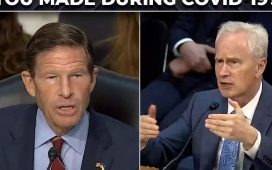The new mechanism will stipulate a shorter deadline for resolution, likely 150 days, compared with the 270 days currently allowed under the Insolvency and Bankruptcy Code (IBC) for even larger accounts. Under the proposed mechanism being finalised, a majority of unrelated financial creditors and the debtor could reach an informal agreement on a plan to resolve the bankruptcy, and the National Company Law Tribunal’s (NCLT) role would be limited to approving this plan, said one of the people cited above.
“After extensive deliberations, it was felt application of the prepackaged mechanism should remain limited to micro, small and medium enterprises, but another time-bound, mostly out-of-court resolution process (creditor-led resolution mechanism) should be introduced,” said a second person.
The prepackaged insolvency scheme- —with a greater informal process and a shorter resolution deadline—currently applies only to smaller companies in loan default.

The government could amend IBC in the winter session of Parliament, likely to start in December, to introduce the framework, said the people cited above. Under the corporate insolvency resolution process (CIRP), the process is supposed to complete within 180 days and another 90-day extension is granted, subject to NCLT approval. But, typically, the process stretches on, thanks to litigation and delay in admission. In about 68% of cases where resolution is in progress, the stipulated 270- day deadline has been breached.Unlike in the current CIRP, there would be no formal bankruptcy admission process in the proposed framework involving the over-burdened NCLT.
The debtors could be allowed to retain control of the company until the resolution plan is approved by the NCLT and worked out, subject to certain riders, said one of the persons. This is in contrast with the CIRP, under which the debtor ceases control upon the admission of the insolvency case.
The new framework would coexist with the existing CIRP and it would be up to the lenders to choose which they would like to tap, said the people.
The government may opt for a phased implementation of the new resolution framework, in sync with the recommendations of a panel under Insolvency and Bankruptcy Board of India (IBBI) whole-time member Sudhaker Shukla.
The panel last year recommended “the adoption of a phased approach,” where only specific financial creditors such as scheduled commercial banks may initially be granted the right to trigger the creditor-led resolution process.
Yogendra Aldak, partner at Lakshmikumaran & Sridharan Attorneys, said, “Although the new framework is somewhat restricted, as only notified unrelated financial creditors can initiate it, this does show promise in enabling an effective mechanism owing to the out-of-court process, backed by statutory mandate, based on mutual cooperation









